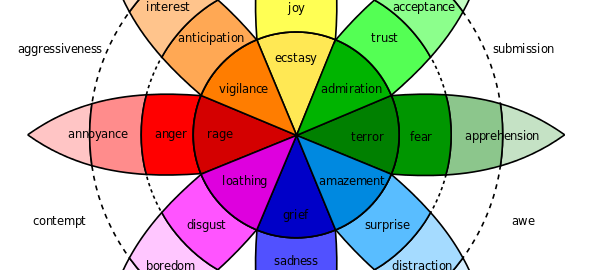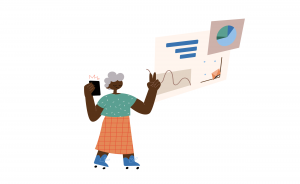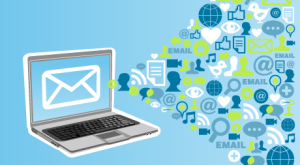We’re all too emotional…at least when it comes to our decisions. People buy, or act for emotional reasons, then seek logic to justify that decision.
Emotion. Logic and reason. You need both. But many businesses often forget that.
They think it’s a choice. And they often opt for reason. They promote features (logic) over benefits (emotions). They present cold hard facts for why someone should do this or buy that. It inevitably falls flat. It’s not how we’re wired.
According to evidence in the IPA database, emotionally-led campaigns perform about twice as well as rational ones. More efficient. Higher profits.
I know firsthand – and research backs it up – that if you first make them feel something, you’ll have less trouble getting them to do something. And both positive and negative emotions have their place.
Emotions 101

Quick question: how many emotions are there? While the answer has traditionally been six basic emotions, a new study from the Institute of Neuroscience and Psychology says there are only four: happy, sad, afraid/surprised, and angry/disgusted.
There’s more, of course. Psychologist Robert Plutchik developed the Wheel of Emotions (including what he believed were the eight basic ones). Emotions are leveled, and combine with others to create new ones. They can be used to powerful effect in marketing and motivation.
The Four Basics
If you’re anything like me, you experience all four – happy, sad, fear/surprise, and anger/disgust – most days while surfing the web.
Using them on your own website can drive action and results. Get them to your site. Then corral them with emotion.
1 – Happy
If you’re looking to increase social sharing, spread a little sunshine. Many studies have determined that happy stories are most shared on social media platforms. Content that generates happiness, hilarity, exhilaration, or inspiration are some of the most frequently shared on the net (especially for video).
Use the Halo Effect to leverage that happy content into a positive opinion about you and your business. If your site makes them feel good, they’ll transfer that feeling to you.
2 – Sad
You might think there’s no positive impact from sadness. You’d be wrong.
There’s a powerful connection between the emotion and the hormone oxytocin, which stimulates feelings of empathy and connection in the brain. Sadness can be used to create both between your visitors and your brand. In fact, recent studies believe it makes people more generous and trusting.
Sad and inspiring content can be used to get people to sign up, donate, or purchase.
3 – Fear/Surprise
The fear of missing out – or FOMO – is a strong motivator. Promoting yourself as a trend-setter, displaying the high number of followers you have, sharing photos and videos of people using and enjoying your product, or suggesting scarcity and exclusivity can tap into that. No one wants to be left out.
Furthermore, fear – actual, palpable fear – makes people latch onto someone or something. It’s the familiarity factor. Manifest fear in some (decent) way, and they’ll feel greater affiliation with your brand according to research from UBC graduate student Lea Dunn.

4 – Anger/Disgust
Content that creates feelings of anger or disgust – both high arousal but negative emotions – can generate almost as much social sharing as happiness.
Use it sparingly, but a well timed rant about some injustice taking place can earn serious attention online. People get angry, and they want to take action. They want to right the wrong, protect the weak, and do something.
It’s powerful, but exhausting.
Those are the Big Four. They can be used to generate massive social sharing, feelings of trust, generosity, and motivation to do “something” at your request.
The Best of the Rest
But your arsenal goes even further.
5 – Pleasure
We’re addicted to pleasure and instant gratification these days. The pleasure principle guides our basic behavior. We want to feel good. And we want to feel good right now.
Activate the pleasure and reward part of their brain with automatic coupons or discounts, charitable donations based on sales (it makes us feel good about ourselves and our decision to buy from you), overnight shipping, instant downloads, and free giveaways.
Give them immediate pleasure, and they’ll come back for more.
6 – Belonging
We all just want to be in with the cool kids. Show them that they are with a little social proof (total sales, number of fans, inclusion on top tens and best ofs). It’s one of Cialdini’s six weapons of influence.

Appeal to their sense of wanting to belong. Show them that with you, they’re sitting at the popular table in the cafeteria.
7 – Trust
If you build it, they will come. Demonstrate your trustworthiness and they’ll feel great about sticking with you. Be real. Offer social proof (see above). Be honest. Reduce the risks involved with doing whatever you want them to do (money-back guarantee, free trial, easy sign-up).
Create trust, and they’ll respond.
8 – Guilt
It’s powerful, but manipulative. Our parents used it to make us do stuff, and we hated them for it. But we still did it.
Guilt works, but should be used rarely. People genuinely want to help save the world, right the wrongs, spend more time with their family, donate to charity, and buy organic. But they don’t always do it. A little guilt can nudge them in the right direction.
9 – Self-Worth
A little confidence and self-esteem goes a long way. Boost feelings of self-worth by emphasizing the positive consequences of signing up, donating, buying, downloading, or whatever else you’re trying to get then to do.
It’s the positive opposite of guilt. It’s not as powerful, but it’ll leave a much better taste in their mouth.
10 – Inspire and Confirm
You need to know your customers. Inside and out. And when you do, you can inspire them to action by confirming their values and beliefs.
Your ideal customers share many of the same values, morals, and ideas. You need to identify them in your efforts.
Confirm them, and they’ll want to follow through with you. Contradict them, and you’ve created cognitive dissonance that will result in little to no action.
Appeal to emotions to drive action. Buy, download, donate, sign-up, opt-in, or whatever.
High arousal emotions like anxiety, exhilaration, awe, inspiration, and anger motivate us. To share. To do. Fear and sadness can bring us closer. Guilt and self-worth can sway us. Different emotions. Different responses.
But they all have an impact.
What emotions speak to you the most? Which appeal to you as a consumer? Share your stories in the comments below:
Images: Wikimedia Commons, Flickr, Flickr
Digital & Social Articles on Business 2 Community(60)
Report Post







